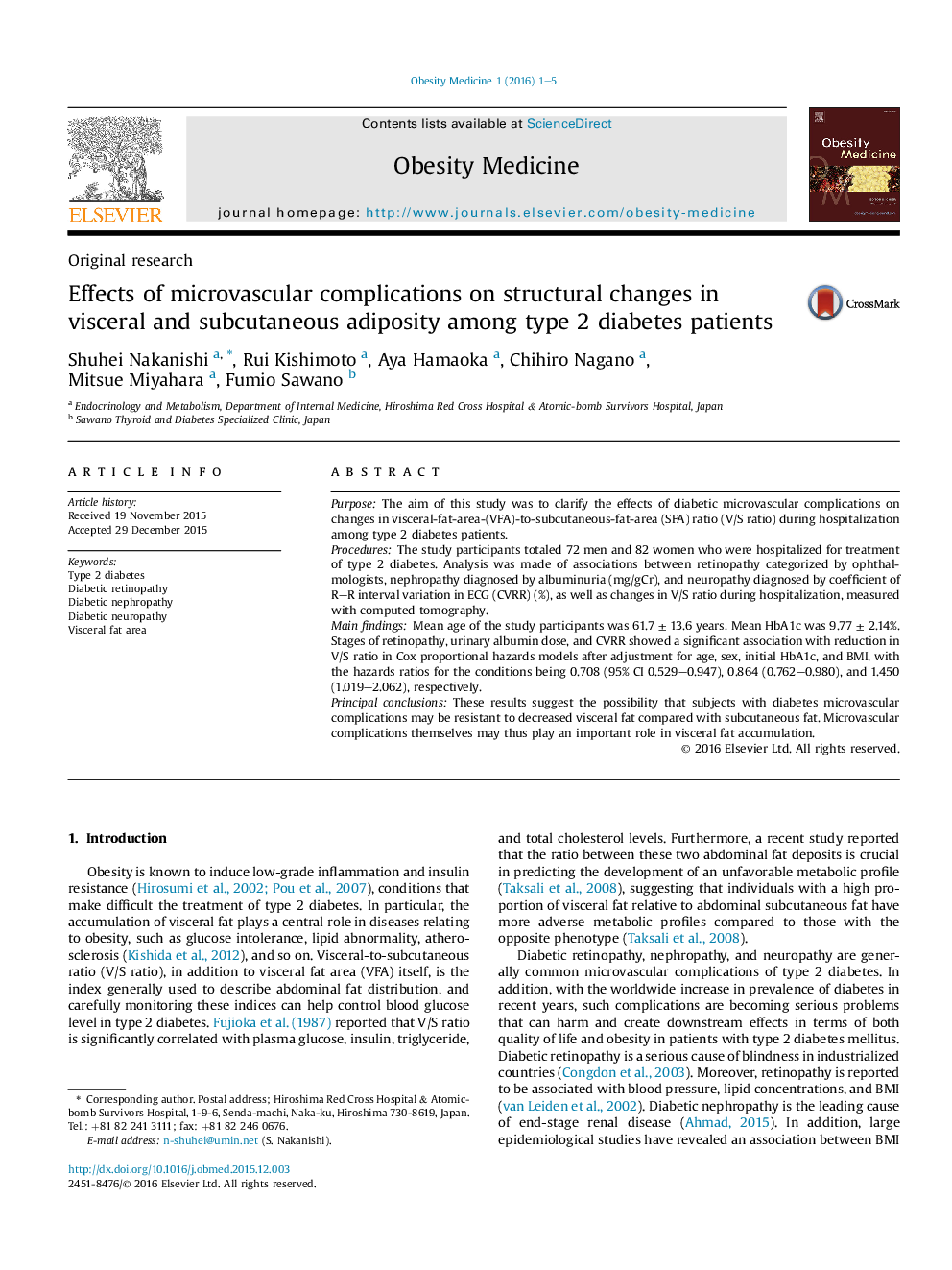| Article ID | Journal | Published Year | Pages | File Type |
|---|---|---|---|---|
| 1097080 | Obesity Medicine | 2016 | 5 Pages |
PurposeThe aim of this study was to clarify the effects of diabetic microvascular complications on changes in visceral-fat-area-(VFA)-to-subcutaneous-fat-area (SFA) ratio (V/S ratio) during hospitalization among type 2 diabetes patients.ProceduresThe study participants totaled 72 men and 82 women who were hospitalized for treatment of type 2 diabetes. Analysis was made of associations between retinopathy categorized by ophthalmologists, nephropathy diagnosed by albuminuria (mg/gCr), and neuropathy diagnosed by coefficient of R–R interval variation in ECG (CVRR) (%), as well as changes in V/S ratio during hospitalization, measured with computed tomography.Main findingsMean age of the study participants was 61.7 ± 13.6 years. Mean HbA1c was 9.77 ± 2.14%. Stages of retinopathy, urinary albumin dose, and CVRR showed a significant association with reduction in V/S ratio in Cox proportional hazards models after adjustment for age, sex, initial HbA1c, and BMI, with the hazards ratios for the conditions being 0.708 (95% CI 0.529–0.947), 0.864 (0.762–0.980), and 1.450 (1.019–2.062), respectively.Principal conclusionsThese results suggest the possibility that subjects with diabetes microvascular complications may be resistant to decreased visceral fat compared with subcutaneous fat. Microvascular complications themselves may thus play an important role in visceral fat accumulation.
